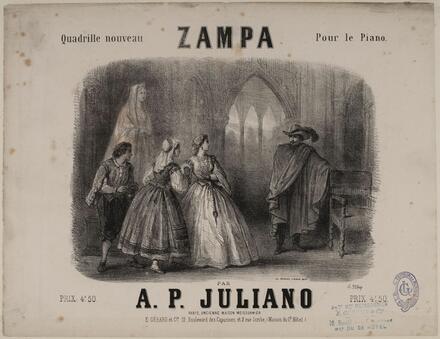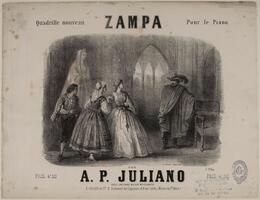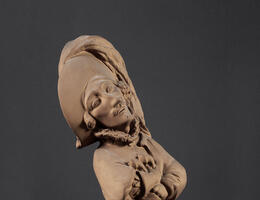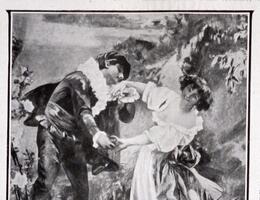Zampa ou La Fiancée de marbre

Zampa was a triumphant success when it was first performed at the Opéra-Comique on 3 May 1831. Its popularity, which rapidly spread to Germany and Italy, can largely be explained by the familiar references which spectators would have recognised, but which were enlivened by “modern” ideas bound to satisfy their need for innovation. In fact, Mélesville’s libretto bears several similarities to the plot of Mozart‘s Don Giovanni: the hero, who fears neither God nor man (here the pirate Zampa, who intends to force Camille to marry him, even though she is betrothed to Alphonse) does not lack courage; a statue, one of the lead character’s victims (Alice, who had died after being deserted), comes to life and acts as a deus ex machina; the plot combines tragic and comic elements. Hérold was also satisfying the Romantic sensibility of his time by making the action revolve around a rogue. He added a few discreet “Gothic” touches (Camille’s ballad “D’une haute naissance”), employed local colour (the action is set in Sicily), and exploited the dramatic resources of orchestration and harmony (criticised by Berlioz for its abundant chromaticism and “chords of wild and fantastic appearance”). Furthermore, Zampa played a part in the development of the opéra comique by expanding it with borrowings from grand opera: in addition to a style of vocal writing which combined French and Italian elements, he also included spectacular scenes like the eruption of Etna (it is hard not to think of the denouement of La Muette de Portici), and contrasted ensemble scenes with intimate moments, by turns melancholy, tender or passionate. The work is clearly a response to the concomitant production of Meyerbeer’s Robert le Diable at the Paris Opéra.



